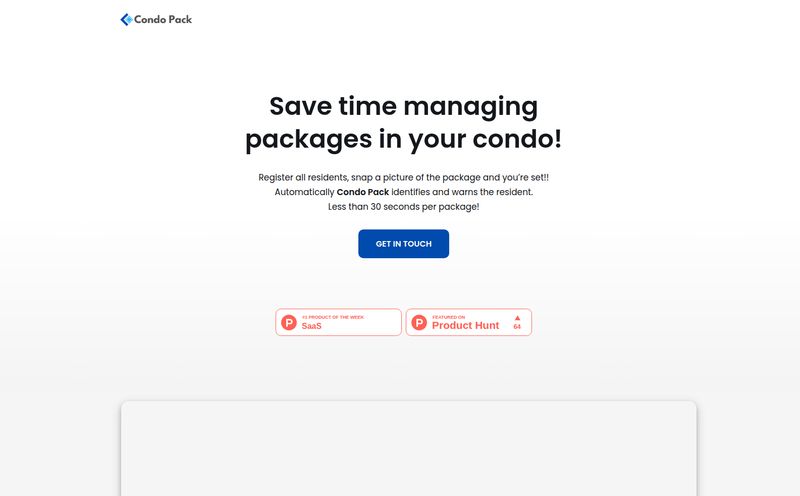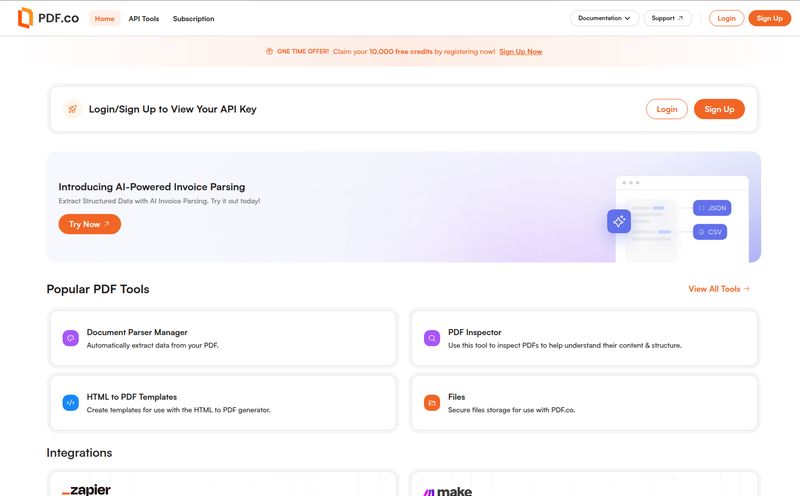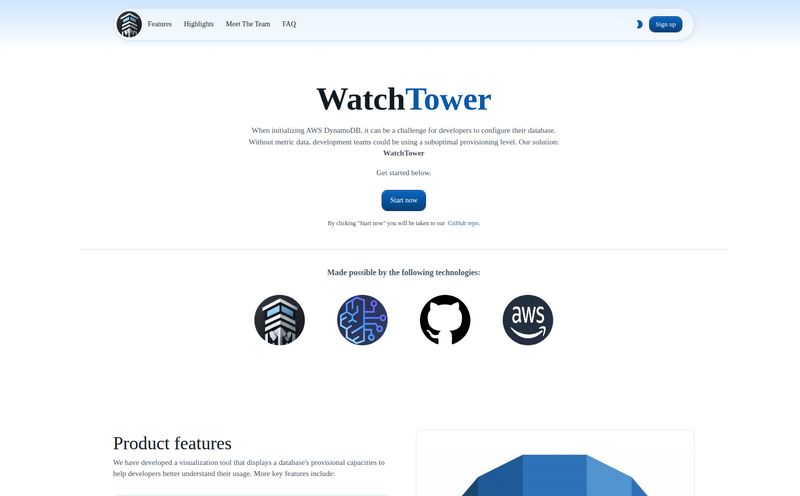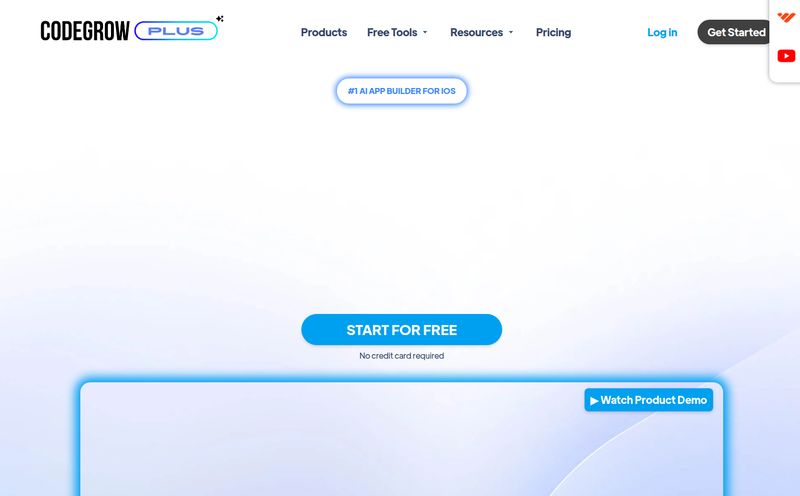If you’ve spent any time in a large organization, you know the drill. Data isn't just data; it's a scattered collection of closely-guarded treasure chests. Marketing has its pile of gold in Salesforce, engineering has its blueprints in Jira, and the legal team… well, their secrets are locked away in some digital fortress only they have the key to. It’s a mess. We call them “data silos,” and they’re the reason most big-company projects move at a glacial pace.
Every so often, a new platform pops up, promising to be the master key to all these locked rooms. The latest one to cross my desk is called Veridian, from a company named VeerOne. It’s not just another dashboard or integration tool. Oh no. They’re calling it a “Neural Knowledge Operating System.”
I know, I know. My marketing-hype alarm bells started ringing too. But after digging into what they’re actually building, I’ve got to admit, I’m intrigued. This might be more than just clever branding.
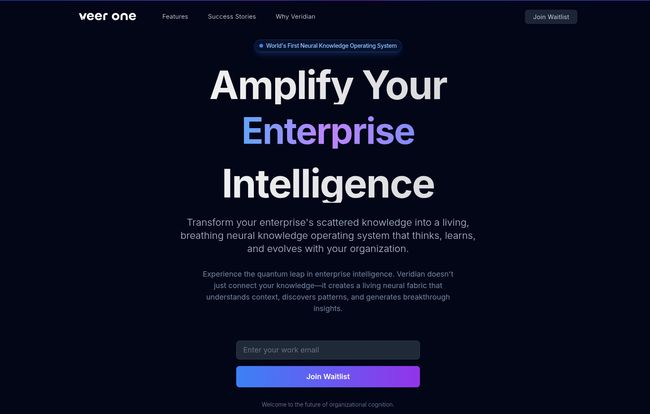
Visit Veridian by VeerOne
What is Veridian, Really? Let's Cut Through the Jargon
So, what does “Neural Knowledge Operating System” actually mean? Imagine all that scattered data from every department—every Slack message, every PDF in a shared drive, every customer ticket—wasn’t just sitting there. Imagine it was all connected, understood, and accessible in real time. That's the vision Veridian is selling.
At its heart, it’s an enterprise AI platform built around a concept called real-time RAG. RAG, or Retrieval-Augmented Generation, is a hot topic in AI right now. In simple terms, it allows a large language model (like the tech behind ChatGPT) to pull answers from a specific set of documents instead of just its general, public training data. This makes the AI’s answers relevant and fact-based for a specific company.
Veridian claims to take this a step further by making it a “living, breathing neural fabric.” Think of it less like a static library and more like a team of super-intelligent librarians who are constantly reading every new piece of information your company produces, organizing it, and preparing it to answer your most complex questions instantly.
The Core Engine: A Look Under the Hood
Fancy concepts are great, but as an SEO and data guy, I care about the mechanics. How does it actually work? It seems to boil down to a few core components that work together.
The Intelligent Data Fabric
First, you have to get the data in. Veridian boasts over 100 enterprise connectors, which is a solid start. It can plug into everything from your CRM and cloud storage to collaboration tools. But here’s the cool part: it doesn’t just pull the data. It creates what they call an Intelligent Data Fabric. This means it’s not just copying files; it’s actively processing and enriching the information, understanding context, and building relationships between disparate data points. It’s the difference between dumping all your books in a pile versus having them neatly arranged on a shelf, with a card catalog that knows how every book relates to the others.
The Neural Processing Engine (Or, RAG on Steroids)
This is where the magic happens. Once the data is woven into the “fabric,” the Neural Processing Engine gets to work. This is their advanced RAG pipeline. When a user asks a question or an application needs information, the engine can retrieve the most relevant, up-to-the-minute information and generate a coherent, accurate response. Because it's real-time, the AI's knowledge is never stale. If a new policy document is uploaded, it’s immediately part of the knowledge base. This is a huge leap from systems that need to be manually retrained.
Adaptive Workflows and Automation
The whole point of this isn’t just to build a fancy internal search engine. It's about automation. Veridian allows you to build “Adaptive Workflows” that can automate complex processes. Their website gives an example of “Real-time Regulatory Intelligence” for a financial services company. They claim it reduced the process of assessing regulatory impact from days to minutes and cut manual effort by 75%. That's not just a small efficiency gain; that’s a total transformation of a critical business function.
Who Is This Actually For? (Hint: Not Your Side Hustle)
Let's be perfectly clear. Veridian is an enterprise-grade platform. You can tell from the language they use: “SOC2 and HIPAA ready,” “enterprise-grade security,” “dedicated success teams.” This is not a tool you’re going to use for your personal blog or small ecommerce shop.
The target audience is large organizations drowning in their own complexity—think finance, healthcare, legal, and massive tech companies. These are the places where data silos aren’t just an annoyance; they’re a multi-million dollar liability.
This is also where we need to talk about the potential downsides. A system this comprehensive and powerful doesn’t just install with a single click. The initial setup and integration will likely be a significant undertaking, requiring dedicated IT resources. There's also a risk of complexity in managing the platform long-term. This isn't a set-it-and-forget-it solution.
The Elephant in the Room: Veridian's Pricing
So, how much does this futuristic knowledge brain cost? I wish I could tell you. Like many high-end enterprise platforms, Veridian doesn't list its pricing publicly. Their pricing page, in fact, was down with a 404 error when I checked. A classic.
“In my experience, no public pricing almost always means one thing: if you have to ask, you probably can't afford it. Or more accurately, the price is completely custom.”
Pricing will almost certainly be tailored to the organization's size, the number of data sources connected, usage volume, and the level of support required. To get a number, you’ll have to do what the website suggests: join the waitlist or schedule a demo with their sales team. Be prepared for a five or six-figure annual price tag, at minimum.
My Honest Take: Is Veridian Worth the Hype?
I’ve seen a lot of tools promise to be the “single source of truth.” Most fall short. Veridian, however, feels a bit different. The focus on a dynamic, real-time “neural fabric” rather than a static data warehouse is the right way to think about this problem. The architecture, combining a data fabric with an advanced RAG engine and automation workflows, is conceptually sound and very ambitious.
The pros are obvious. A truly unified knowledge system could unlock incredible efficiencies and generate insights that are currently impossible to find. For a global bank or a pharmaceutical research company, the ROI could be massive.
But the cons are real, too. The cost will be a barrier for many. And more importantly, the implementation could be a beast. A platform like this is only as good as the data you feed it and the way you integrate it into your existing processes. It requires not just a financial investment, but a deep organizational commitment. It's a powerful tool, but not a silver bullet.
My final thought? Veridian is one to watch. If VeerOne can deliver on its promises and help enterprises navigate the tricky implementation phase, this could genuinely change how large businesses operate. It’s a bold swing at a very old problem, and I, for one, am excited to see if they hit it out of the park.
Frequently Asked Questions About Veridian
- What is Veridian AI?
- Veridian is an enterprise AI platform designed to unify an organization's scattered data into a single, intelligent system. It uses real-time Retrieval-Augmented Generation (RAG) to allow companies to build AI applications that draw from their own, up-to-the-minute internal knowledge.
- What is real-time RAG?
- RAG (Retrieval-Augmented Generation) is a technique that lets AI models access a specific knowledge base to answer questions. "Real-time" means the knowledge base is constantly updated as new information is created, so the AI's answers are always based on the very latest data.
- Is Veridian suitable for small businesses?
- Probably not. Veridian is built for large enterprises with complex data environments and significant budgets. The pricing structure and implementation effort are likely prohibitive for smaller companies or startups.
- How does Veridian ensure data security?
- The platform is designed with enterprise security in mind. It mentions features like data encryption at rest and in transit, role-based access controls, and readiness for compliance standards like SOC2 and HIPAA, which are crucial for handling sensitive corporate data.
- What kind of data sources can Veridian connect to?
- Veridian claims to have over 100 enterprise connectors. This typically includes CRMs (like Salesforce), cloud storage (like Google Drive, S3), databases, collaboration tools (like Slack, Confluence), and other common business software.
- How do I find out Veridian's pricing?
- You won't find a price list on their website. For enterprise software like this, pricing is almost always custom. You'll need to contact their sales team through their website to request a demo and get a personalized quote based on your organization's needs.
Conclusion
So, there you have it. Veridian is an incredibly ambitious platform aiming to solve one of the biggest headaches in the corporate world. It's not just another AI tool; it’s a fundamental rethinking of how enterprise knowledge can be managed and activated. While the price tag and setup effort will put it out of reach for most, for the right kind of organization, it could be a game-changer. The era of the intelligent, self-evolving enterprise might just be getting started.
